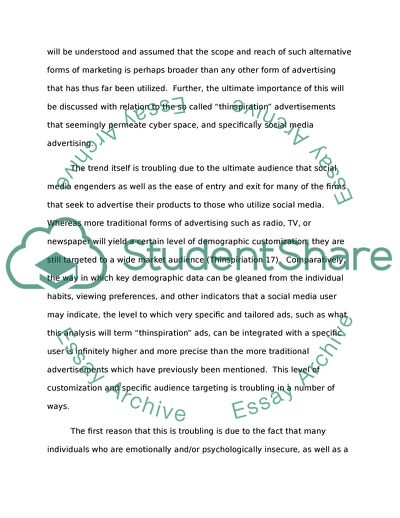Cite this document
(An Exploration of a Troubling Trend Manifesting Itself in Social Media Coursework Example | Topics and Well Written Essays - 2250 words, n.d.)
An Exploration of a Troubling Trend Manifesting Itself in Social Media Coursework Example | Topics and Well Written Essays - 2250 words. https://studentshare.org/journalism-communication/1795295-thinspiration
An Exploration of a Troubling Trend Manifesting Itself in Social Media Coursework Example | Topics and Well Written Essays - 2250 words. https://studentshare.org/journalism-communication/1795295-thinspiration
(An Exploration of a Troubling Trend Manifesting Itself in Social Media Coursework Example | Topics and Well Written Essays - 2250 Words)
An Exploration of a Troubling Trend Manifesting Itself in Social Media Coursework Example | Topics and Well Written Essays - 2250 Words. https://studentshare.org/journalism-communication/1795295-thinspiration.
An Exploration of a Troubling Trend Manifesting Itself in Social Media Coursework Example | Topics and Well Written Essays - 2250 Words. https://studentshare.org/journalism-communication/1795295-thinspiration.
“An Exploration of a Troubling Trend Manifesting Itself in Social Media Coursework Example | Topics and Well Written Essays - 2250 Words”. https://studentshare.org/journalism-communication/1795295-thinspiration.


